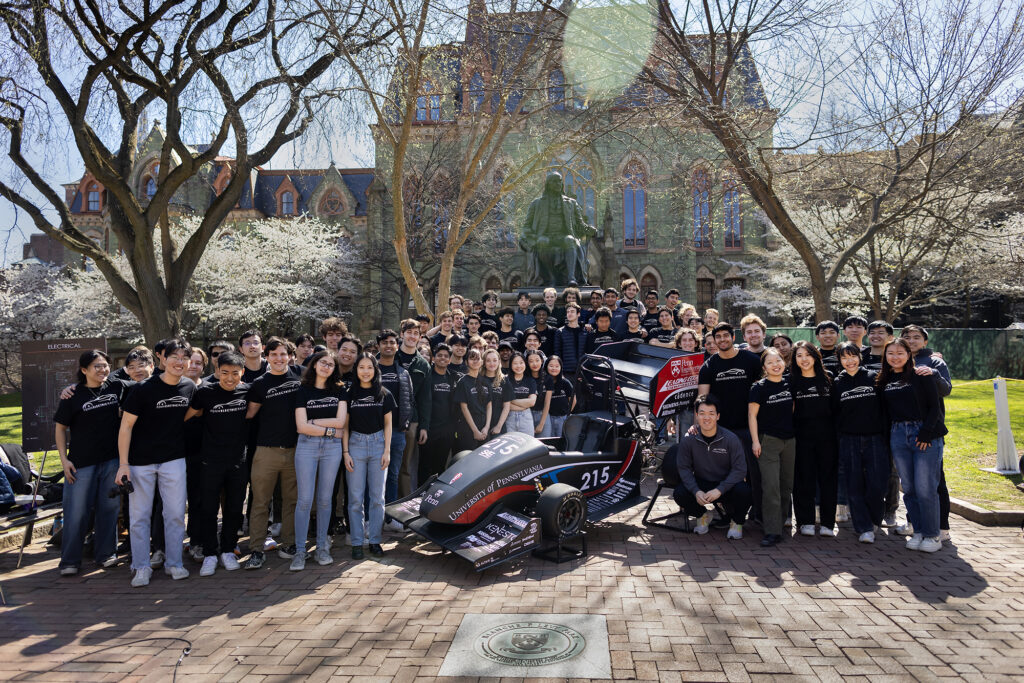
A crowd filled with curious, eager faces gathered on College Green to see the School of Engineering and Applied Science’s Penn Electric Racing (PER) team unveil their latest creation: REV9. It’s the tenth car produced by the student-run club that’s been designed to compete in the annual Formula Society of Automotive Engineers Michigan race in June.
At the launch, second-year engineering student Rachel Xie, the operations lead of PER from San Ramon, California, welcomed the crowd, explaining that the club is divided into four main cores working year-round on multiple fronts to build the car from scratch and provide the onboard computation needed to run the systems.
“This season has been challenging, yet the team came together and persevered,” Xe said. Third-year students Rohan Maliekkal from Dubai and second-year student Lauren Lee from San Francisco, the mechanical leads of the team, pointed to this year’s two overarching mechanical goals: innovating the powertrain system, which allows REV9 to hit a top speed of 100 miles per hour, and reducing the car’s weight to under just under 190 kilograms.
Another key improvement the two noted is a revamped battery mounting scheme, allowing for insertion and removal in under five minutes, valuable for saving time between events.
